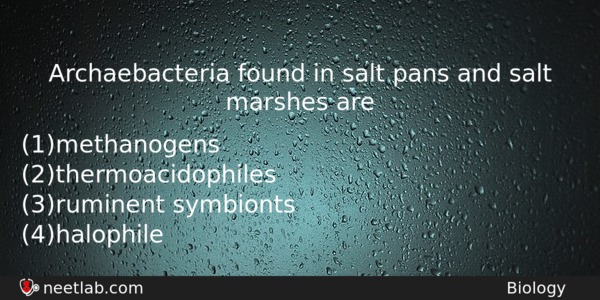| ⇦ | 
| ⇨ |
Archaebacteria found in salt pans and salt marshes are
Options
(a) methanogens
(b) thermoacidophiles
(c) ruminent symbionts
(d) halophile
Correct Answer:
halophile
Explanation:
No explanation available. Be the first to write the explanation for this question by commenting below.
Related Questions: - Limbless amphibians belong to the order
- Black foot disease is caused due to excess of
- Holdfasat, stipe and frond constitues the plant body in case of
- Heterosis requires
- The excretory material of marine bony fish is
Question Type: Memory
(964)
Difficulty Level: Easy
(1008)
Topics: Diversity In Living World
(339)
Subject: Biology
(4253)
Important MCQs Based on Medical Entrance Examinations To Improve Your NEET Score
- Limbless amphibians belong to the order
- Black foot disease is caused due to excess of
- Holdfasat, stipe and frond constitues the plant body in case of
- Heterosis requires
- The excretory material of marine bony fish is
Question Type: Memory (964)
Difficulty Level: Easy (1008)
Topics: Diversity In Living World (339)
Subject: Biology (4253)
Important MCQs Based on Medical Entrance Examinations To Improve Your NEET Score
18000+ students are using NEETLab to improve their score. What about you?
Solve Previous Year MCQs, Mock Tests, Topicwise Practice Tests, Identify Weak Topics, Formula Flash cards and much more is available in NEETLab Android App to improve your NEET score.
Share this page with your friends

Leave a Reply